Alex O’Connell, Founder & Director at AO Innovations (Australia)
Alex is the founder of AO Innovations, a design firm that epitomizes the aesthetic harmony of simplicity. The chic and refined quality of the AO Innovations range ensures timelessness throughout the entire collection. It utilizes numerous modern manufacturing technologies and craftsmanship to prototype and bring the designer’s imagination to life across a number of market segments including furniture, lighting and an extended range of products.
Key takeaways form this interview include:
- Design Shows and exhibitions are unarguably one of the most significant elements to exposure for me as a designer.
- AO innovations started off as more of a hobby but it has grown into a small business.
- Try to optimize a design as much as possible to reduce waste in both the pre and post production phases.
You can find Alex’s company at http://www.aoinnovations.com and like his Facebook page at http://www.facebook.com/innovationsao.
What is it about designing products that inspires you and how are the classes at RMIT University feeding that thirst for knowledge? Out of curiosity, honestly, how much of what you are learning is actually helping you in your career vs just fluff? I know when I was in University, the first year was a write-off (had to take generic courses before your major) and about half afterwards wasn’t applicable to much of anything.
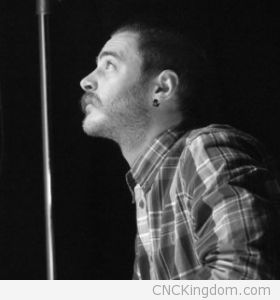 In my experience 80% of the classes that I have undertaken at RMIT have been useful. I was really impressed by the first two years of Associate degree in Furniture Design. This is because much emphasis was put on the development of CAD skills (Autocad, Sketchup and Solidworks) which has significantly enhanced my ability to design/visualize.
In my experience 80% of the classes that I have undertaken at RMIT have been useful. I was really impressed by the first two years of Associate degree in Furniture Design. This is because much emphasis was put on the development of CAD skills (Autocad, Sketchup and Solidworks) which has significantly enhanced my ability to design/visualize.
Unlike other areas of design/architecture, graphic design, I like being able to design objects/products that are realistic and which come to life.
Creating something that you can touch and feel, or hold in your hand, is what interests and motivates me. It gives me great satisfaction to see something that begun as an idea in my head can be put to paper, prototyped and eventually becomes a final piece.
RMIT certainly continues to facilitate, challenge and excite me as a designer.
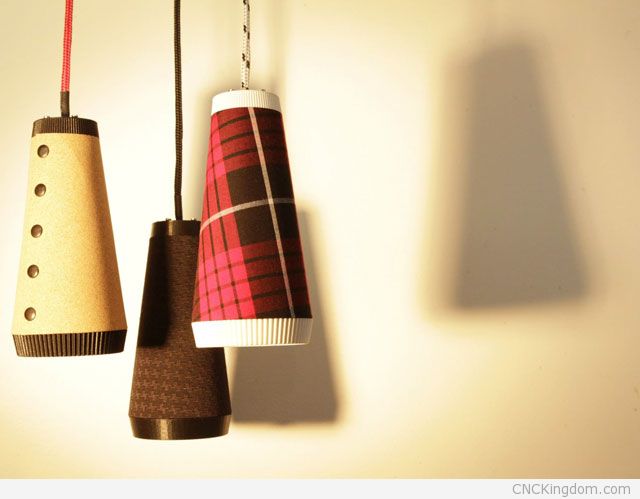
Can you describe in a bit more detail what “holistic and sustainable principals” means to somebody like me who never took a design course? Can you give some examples using some of your designs of how that approach was used during the design process?
To design a product according to holistic principals is to ensure that it will have as little impact on the environment in its creation, during its life, and also in its disposal. It can be understood as approaching as viewing the designing system as a whole, making specific emphasis to reduce the environmental impact of the product in in its life and thereafter.
Sustainability is a strong element of this. This involves sourcing materials and labour that do not create harmful and irreversible impacts on the natural environment as well as not exploiting human rights. It is my personal objective to continually practice holistic and sustainable principals in the design process of all products in the AO Innovations line.
For example, Troika stool is constructed from Reclaimed Australian hardwood timber. All manufacture has been sourced locally and comply with ethical standards. The products full life cycle has been taken into consideration as it can be dismantled and all components recycled.
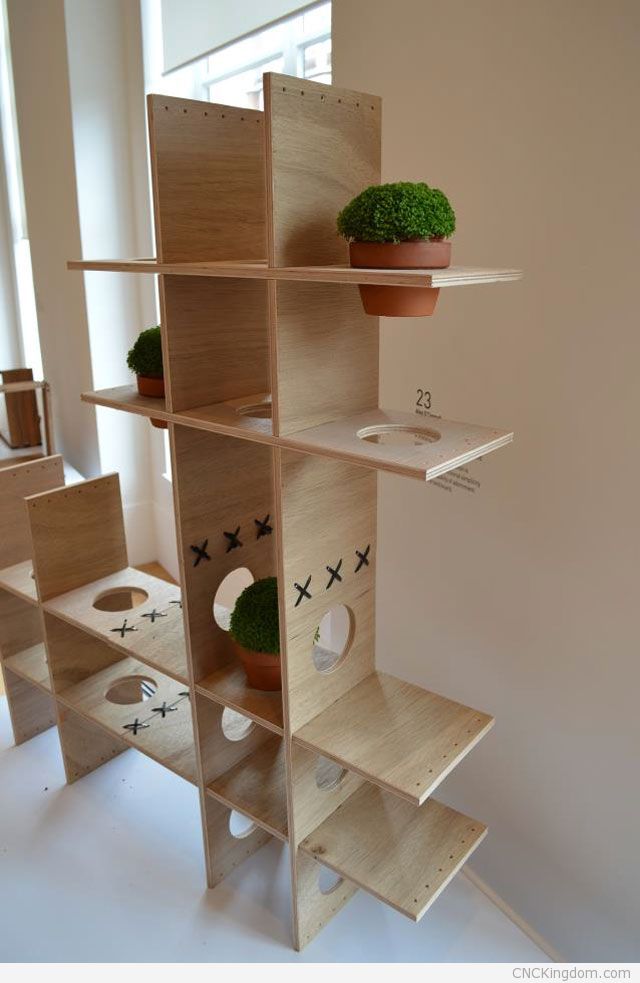
You have participated in a number of design shows, exhibitions and awards – how do you go about submitting work to these and what have been the result from it? Does it help you get customers for AO Innovations?
Design Shows and exhibitions are unarguably one of the most significant elements to exposure for me as a designer. I really enjoy participating in these trade shows/exhibitions. AO innovations has only been established for a short amount of time but I hope by participating in these design exhibitions I can direct traffic to AO innovations.
Not only are these exhibitions great to gain exposure but they also allow me to network and connect with other designers from all over Australia. You never know who you might meet or what you might learn.
I would like to involve myself on more of an international level. I am yet to place at any of these exhibitions, but as a result of VIVID design competition in 2012 my Cross-iT Shelving was chosen to be taken over to London design exhibition where it was exhibited under the Habitat platform.
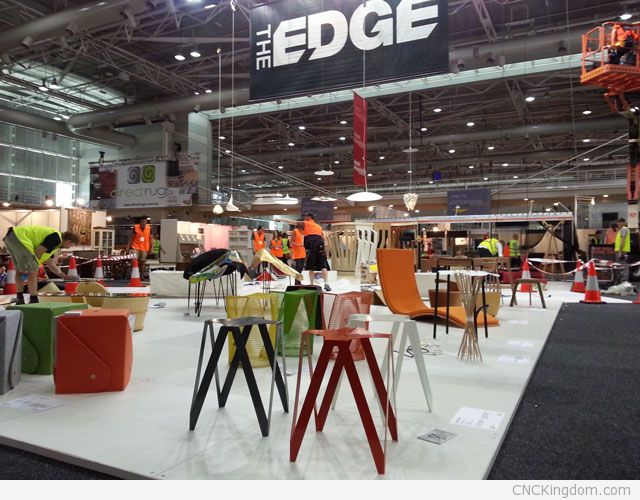
Generally, I’ve seen product and industrial designers jump from a few internships at well-known companies before actually starting their own firm – you just jumped the queue right into being the director of your own company. Can you explain why you took this route and what have been some of the benefits?
AO innovations started off as more of a hobby but it has grown into a small business. What I love about AO innovations is it allows me the freedom to produce a varied collection of designs, all united under the one label.
While I would appreciate the opportunity to one day learn and grown from a bigger, well known company, the expansion and development of AO Innovations will continue to be my first and foremost priority. There is no better feeling that working and designing for yourself. That is my idea of freedom.
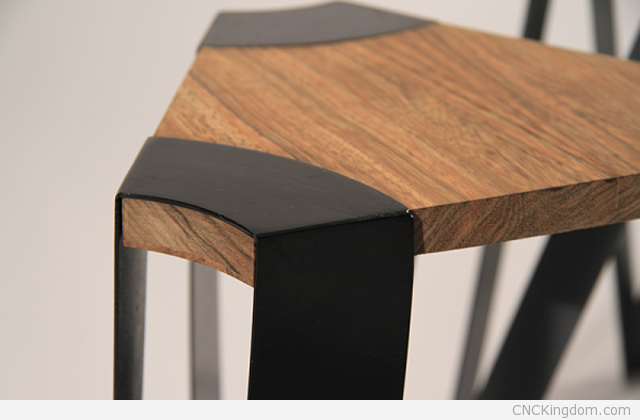

I really like your Hekta Pendant Light – it’s such a great design aesthetically and can be made so easily with several types of CNC machines – from CNC plasma to 3D printer. Where did the concept come from and have you been able to commercially produce these for stores? I’d see a good market for this.
What gave rise to the Hekta pendant light design was material availability at the time. I started by utilizing Reclaimed building materials (My idea of sustainable design – To re-use or reclaim what is already in existence rather than purchasing fresh material) including Ex-office furnishings; Echopanel Alucobond and Perspex.
Tightly nesting components together ensured maximum yield of material and reduced waste (CNC knife, CNC router, Laser cutter and 3D printer) I then used modern machinery and joining techniques to form what you see today. The idea of flat pack-ability was also an important factor in the design process of Hekta. New materials and technology really excite me so I usually find myself designing objects that utilize up and coming technologies.
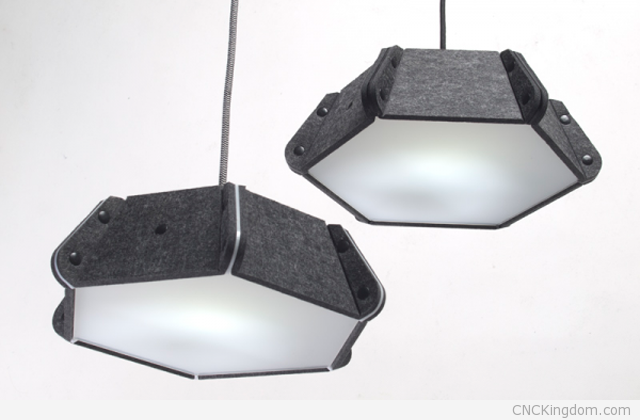
What are some of the challenges you see coming-up in the world of design? For instance, many designers are now finding themselves redundant as technology and outsourcing increase within manufacturing companies.
As you said, technological advancements and offshore manufacturing make it extremely difficult for small, local design companies like mine. It’s becoming harder and harder to manufacture good quality and sustainably produced items when foreign companies can copy and distribute similar looking products at a lower cost. It is really up to the Australia people to embrace and support local companies if design in Australia is to have a future.
I believe that technology should be utilized by the designer as a tool in creating original and innovative products. Staying ahead of the curve and embracing the new is important to me as a designer and I see good and exciting things for the design community as technology continues to make new things happen. 
